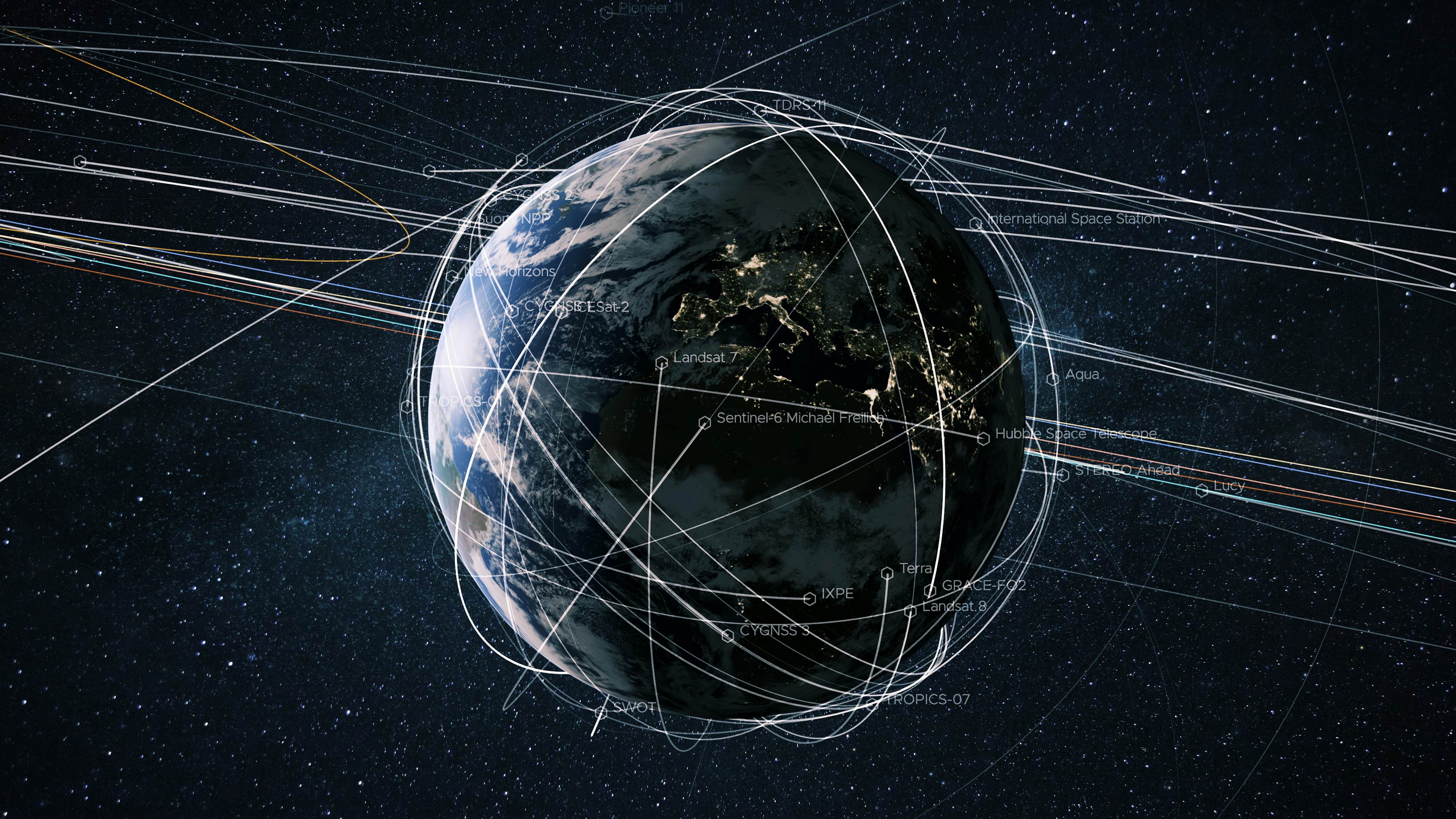VC Masterclass: Backing the Breakthrough That Could Redefine Flight
How CEO Venus Aerospace is rewriting the rules of high-speed flight

Picture this: It’s 9:37 AM on May 14, 2025, and you’re standing in the New Mexico desert watching a small rocket lift off from Spaceport America. What you’re witnessing isn’t just another engine test: it’s history in the making. Venus Aerospace, led by Sarah “Sassie” Duggleby, just achieved what many thought impossible: the first U.S. flight test of her company’s Rotating Detonation Rocket Engine (RDRE). This compact, highly efficient propulsion system is designed to enable hypersonic flight — and redefine how we move through the world.
“This is the moment we’ve been working toward for five years … We’ve proven that this technology works — not just in simulations or the lab, but in the air.”
— Sarah “Sassie” Duggleby
And honestly? We at Alumni Ventures couldn’t be more thrilled to have backed her vision from the start.
Meet the Visionary Behind the Breakthrough
While most of the aerospace world was focused on incremental improvements, husband-and-wife team Sassie and Andrew Duggleby saw an opportunity to completely rewrite the playbook on hypersonic propulsion.
Together, they founded Venus Aerospace — with Sassie now leading the company as CEO, guiding both vision and execution. With a biomedical engineering degree from Texas A&M, an MBA from Virginia Tech, and hands-on experience scaling a high-tech manufacturing company with 200%+ year-over-year growth, she brings a rare combination of technical fluency and business acumen. What stood out to us, though, wasn’t just her résumé — it was her drive to solve what engineers call the “three speed zone problem.”
For decades, aerospace engineers have faced a frustrating reality: no single engine can efficiently operate across the full flight envelope. You need one engine for 0 to Mach 3, another for Mach 3 to 4, and yet another for Mach 5 and beyond. It’s like needing three different cars just to drive across town — inefficient, overcomplicated, and costly.
The solution? Build one engine that handles it all. Venus’s VDR2 (Venus Detonation Ramjet) system is designed to operate from takeoff through Mach 6. The breakthrough lies in rotating detonation — supersonic explosions traveling continuously in a ring-shaped chamber. It’s a radically different approach that delivers higher pressure, greater efficiency, and significantly more thrust.
Capable of reaching speeds up to 4,600 mph — nearly six times the speed of sound — the VDR2 engine could one day make flights from Los Angeles to Tokyo possible in under two hours.
“We’re not just building faster engines,” Sassie says. “We’re solving fundamental physics problems that have constrained this industry for decades.”
What Set Venus Apart — and Why We Kept Investing
- Home
Achieving What Others Deemed Impossible
In a field where “breakthrough” claims often overpromise and underdeliver, Venus Aerospace stands apart. Since its founding in 2020, the company has rapidly emerged as a true pioneer in advanced propulsion technology. Its RDRE and VDR2 engines are redefining what’s possible in high-speed flight, pushing the frontiers of aviation, space, defense, and beyond. - Home
The Technology Works — For Real
While competitors like Hermeus rely on turbine-based combined-cycle engines that require complex transitions between speed zones, Sassie’s team built something fundamentally different: a single-engine RDRE architecture that delivers 15% higher efficiency with fewer potential failure points. By April 2023, they had completed four successful drone test flights and achieved over 100 RDRE rocket tests using multiple propellants, with nearly 200 seconds of total hotfire runtime. This isn’t theoretical — it’s proven tech. - Home
She Gets the Big Picture
Sassie understood that the path to hypersonic passenger flight doesn’t start with commercial passengers. First, the technology had to prove itself in national defense. Her roadmap includes NASA Moon Lander RDRE contracts, DARPA contracts, and substantial government funding. That pragmatic focus led to contracts with NASA and DARPA, plus major government funding, laying the groundwork for broader aerospace transformation. - Home
The Smart Money Agrees
When a startup is backed by investors of the caliber of Airbus Ventures, Prime Movers Lab, Draper Associates, and America’s Frontier Fund, you pay attention. As Thomas d‘Halluin from Airbus put it: “Venus has shown an extraordinary ability to translate deep technical insight into hardware progress, and we're proud to support their bold approach in their attempt to unlock the hypersonic economy and forge the future of propulsion.”
What This Breakthrough Could Unlock
Venus Aerospace’s next-generation rotating detonation rocket engine (RDRE) has the potential to reshape industries and redefine global movement. By unlocking more efficient, compact, and powerful propulsion, this innovation could ripple far beyond aerospace — advancing national security, accelerating space exploration, and even influencing the future of clean energy
Here’s how that could look.
- Home
Faster Global Travel
Venus is steadily advancing toward its vision of a zero-carbon civilian spaceplane capable of flying anywhere in the world in 1–2 hours. As Sassie told the Houston Chronicle, “There will always be a reason for meeting face-to-face. With Venus Aerospace... travelers could fly halfway around the world and back within a workday.” - Home
Defense and National Security
The U.S. Department of Defense has made hypersonics a strategic priority. RDREs could power the next generation of high-performance missiles and defense systems — enhancing speed, efficiency, and U.S. technological advantage. - Home
Space Exploration
RDREs may unlock deeper, more sustainable space missions by reducing fuel requirements and increasing payload capacity — enabling more ambitious commercial and scientific efforts to the Moon, Mars, and beyond. - Home
Energy Reimagined
Because of their efficient combustion process, RDREs could eventually inspire cleaner, more sustainable power systems — contributing to reduced emissions and advancing propulsion research beyond aerospace
The Results Speak for Themselves
Since our initial investment, Sassie and the Venus Aerospace team have consistently delivered against ambitious technical and business milestones — validating our investment thesis with every step forward.
Key Technical Achievements (2021-2023)
- HomeFour successful drone test flights
- HomeOver 100 RDRE rocket tests across multiple propellants
- HomeBreakthrough detonation of hydrogen peroxide in liquid form with leading fuel candidates — enabling sustained, controlled detonation
- HomeTeam growth from 55 to 75+ employees
Recent breakthroughs (2024-2025)
- Home
February 2024
First supersonic drone flight, hitting Mach 0.9 - Home
December 2024:
First ignition of the VDR2 engine system - Home
May 2025:
First U.S. flight test of RDRE technology - Home
Coming soon:
Hypersonic drone testing planned for late 2025
We appreciate a milestone-driven approach to deep tech investing. Few industries are as technically demanding as aerospace, and few founders are executing at this level.
As Sassie said after that historic May flight test: “With this milestone, we’re one step closer to making high-speed flight accessible, affordable, and sustainable.”
Why We Back Founders Like Sassie

Sassie Duggleby and Venus Aerospace are exactly why Alumni Ventures exists — to back exceptional leaders tackling the world’s hardest problems with vision, grit, and technical brilliance.
Our multi-million-dollar investment in Venus across three rounds reflects our long-term commitment to backing exceptional entrepreneurs from day one, as they transform breakthrough technologies into world-class companies.
Sassie’s ability to raise significant capital, forge strategic partnerships with NASA and DARPA, and deliver significant technical milestones shows what’s possible when deep engineering expertise meets commercial clarity. With proven technology, government contract traction, and a clear roadmap from military applications to commercial aviation, Venus is exactly the kind of category-defining opportunity we live for.
As the hypersonics economy starts taking shape, Sassie Duggleby isn’t just positioning Venus Aerospace to compete — she’s leading the charge to redefine how we move across the planet.
Want in on the Next Big Thing?
At Alumni Ventures, we’re proud to back trailblazers like Sassie Duggleby — founders pushing the boundaries of what’s possible in hypersonics, AI, clean energy, and beyond. We seek out innovative technologies and the bold leaders who will shape the next decade.
If you’re an accredited investor looking to access opportunities like Venus Aerospace, explore how our diversified funds provide institutional-grade venture exposure — all built to help you invest in what’s next.
From Balcony Talk to Breakthrough Rocket Tech
In a recent interview with Investment Reports, Sassie Duggleby shared how the spark for Venus Aerospace came from a moment of personal frustration — and a flash of visionary thinking.
The idea started when my husband, Andrew, and I were deployed to Japan. We were both working for Virgin Orbit — he’s a PhD rocket scientist, I’m an engineer with an MBA. One Sunday afternoon in 2018, we were sitting on our balcony overlooking Tokyo Bay, trying to plan a trip home to attend my grandmother’s birthday. The flight would take 13 hours.
That’s when Andrew said, ‘If we could prove out a new kind of rocket engine, we could be home in an hour.’
At the time, I thought it was science fiction.
Six years later, that’s exactly what we’re building.”
Learn More About the Women’s Fund
Invest in women entrepreneurial leaders bringing their talents and perspective to promising markets — from femtech to software, pharma, biotech, CPGs, and more.
Max Accredited Investor Limit: 249
This communication is from Alumni Ventures, a for-profit venture capital company that is not affiliated with or endorsed by any school. It is not personalized advice, and AV only provides advice to its client funds. This communication is neither an offer to sell, nor a solicitation of an offer to purchase, any security. Such offers are made only pursuant to the formal offering documents for the fund(s) concerned, and describe significant risks and other material information that should be carefully considered before investing. For additional information, please see here. Example portfolio companies are provided for illustrative purposes only and are not necessarily indicative of any AV fund or the outcomes experienced by any investor. Example portfolio companies shown are not available to future investors, except potentially in the case of follow-on investments. Venture capital investing involves substantial risk, including risk of loss of all capital invested. This communication includes forward-looking statements, generally consisting of any statement pertaining to any issue other than historical fact, including without limitation predictions, financial projections, the anticipated results of the execution of any plan or strategy, the expectation or belief of the speaker, or other events or circumstances to exist in the future. Forward-looking statements are not representations of actual fact, depend on certain assumptions that may not be realized, and are not guaranteed to occur. Any forward-looking statements included in this communication speak only as of the date of the communication. AV and its affiliates disclaim any obligation to update, amend, or alter such forward-looking statements, whether due to subsequent events, new information, or otherwise.
